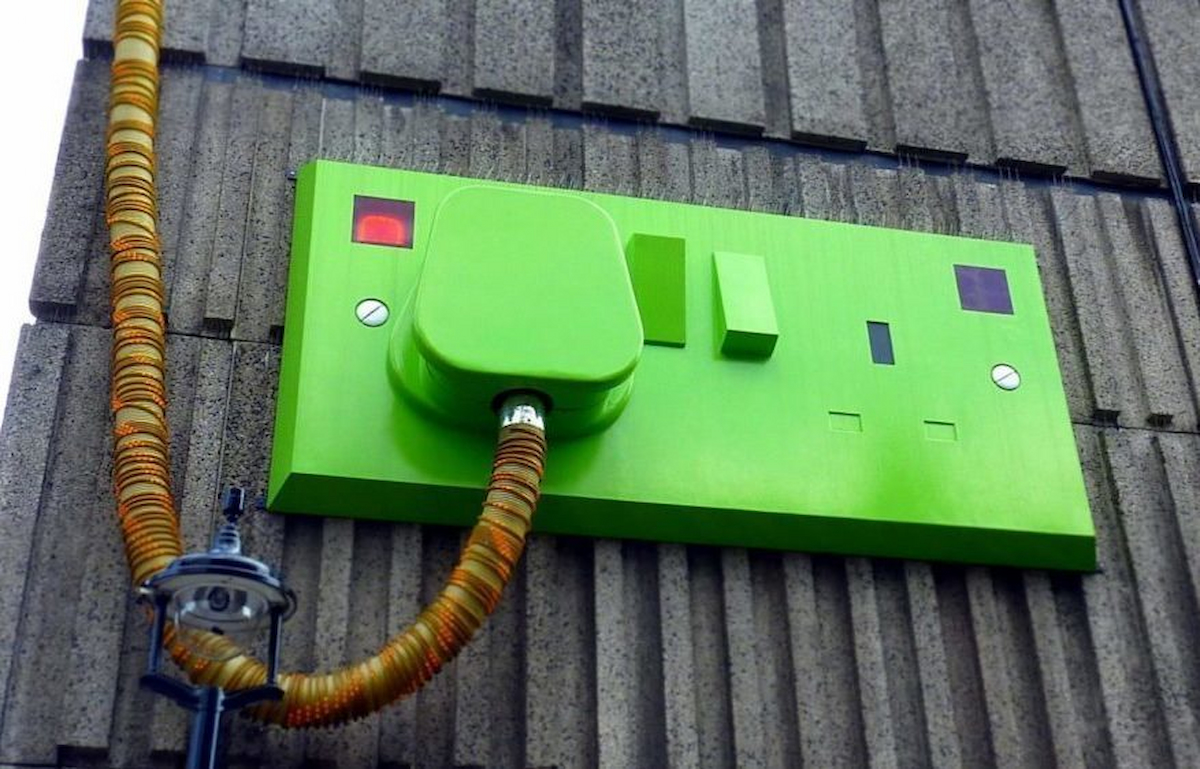Chances are that if you are already asking yourself this question you are starting to consider a sustainable approach to carry on with business activities. You might have noticed that mostly, all the suggested initiatives and ways to do this are based on large and complex big corporations which usually end up hiring specialists to assess and identify tailored sustainable solutions for their companies.
This situation has led us to think about what options are left for small, family or personal businesses and also why it is important to consider aspects of sustainability in your venture. For small businesses, one of the easiest ways to start is to focus your efforts and use one of the most overarching indicators of sustainability, your carbon footprint in your activities. Your carbon footprint is, in general terms, the total amount of greenhouse gases (GG) measured in tons of CO2 emissions.
It is necessary that every player in society tries to reduce their carbon footprint if we want to slow down global warming and climate change. According to a 2020 emissions report, our world is expecting a global temperature rise of at least 3°C in this century, a situation that will put us at risk the way we live today.
Why reduce the carbon footprint in my small business?
In 2019, the UK parliament passed a law which is expected to reduce by 100% the country’s emissions by 2050, all of this based on the country’s 1990 emissions. It is likely that the further regulations of this law will require all sectors and scales of business to contribute to this purpose. For this reason, it is very important that you start thinking about reducing your carbon footprint.
Also, reducing your carbon footprint will allow you to have less of an environmental impact. As a service provider and/or a small-scale factory, you are responsible for how you present and align your values to consumers. Doing this will increase your appeal and will result in further sales or even just to get a positive opinion from your local community members.
This benefit has been proven by a recent market research that shows that at least 43% of global consumers expect businesses to be accountable for environmental impacts. Additionally, managing to minimize your carbon footprint will allow you to save money, reinforce your environment care values and most importantly, capitalize on the positive impact that this will have on your consumer perception
How do I reduce the carbon footprint in my small business?
You can start doing this in a very simple and practical way, in your office. You will see that easy and cheap strategies with your staff can help you to contribute to implement changes within your workspace. Here are a few prioritised steps that analyze some key components of your daily office activities that can be changed to reduce your carbon footprint.
1. Promote and reward the use of sustainable transport
Part of the carbon footprint in your office is related to the emissions generated by your staff. Think about how many people drive to your office using their own car and whether it is powered by petrol. Reports in the UK have shown that on average, petrol-powered cars emit at least 192g CO2e per kilometer, or 307g CO2e per mile. We also know that other, more sustainable, ways of transportation have a lower carbon footprint.
Based on this information, and if we know what is the distance someone took to get to the office and which vehicle they used, we could know exactly their carbon footprint associated with commuting to the office. Here we provide alternative transport options that will definitely decrease your carbon footprint in the office:
- Walking and cycling:
The first priority would be to see which of your employees have the ability to walk or bike to work. This option is the most important because it has added value to the reduction of transport emissions such as improved health and mood. Walking or biking has a lot of potentials to reduce your carbon footprint because at least 41% of short car trips could be made in this way. A recent research has suggested that the carbon footprint of walking or cycling could be as low as 80 g CO2/mile and 96 g CO2/mile only considering the food intake associated with the lost calories.
Based on this, if we assume that one of your employees is using their car to go to work and then he decided to walk or bike, doing simple math we could finally calculate weekly, monthly and yearly reductions.
For example using 23 miles a day as the average UK commuting distance:
- Petrol-car commuting emissions: 307 g CO2e/mile * 23 miles/day = 7 061 g CO2e/day
- Walking commuting emissions: 80 g CO2e/mile * 23 miles/day = 1 840 g CO2/day 74% less
- Cycling commuting emissions: 96 g CO2e/mile * 23 miles/day =2 208 g CO2/day 69% less
- Public transportation:
For staff that have to take a longer trip to work, you can use the same approach but with public transport. We will only consider buses and trains. When using buses, travelers have a carbon footprint of 168 CO2e per mile. This footprint is 45% smaller than that generated by the use of the petrol-powered car.
On the other hand, National and Eurostar rails emit 65.55 and 9.6 g CO2e respectively, which is 78% and 97% less than conventional cars. This information, in the same way as in the previous case, allows us to see how the promotion of the use of these transports can diminish our footprint.
- Using Electric Vehicles (EV´s):
EVs have an average carbon footprint of 84.8g of CO2e / mile, 72% less than conventional cars.
Today this option is quite crucial, as many people refuse to use public transportation for fear of transmitting diseases such as COVID-19. Promoting and rewarding the use of these vehicles might be hard depending on the possibilities to facilitate either acquisition or charging of EVs. The good thing is that now the UK government is presenting tax exemption for EVs purchase and further providing a “Workplace Charging Scheme” to ease the change from petrol to electricity powered cars.
2. Reduce the consumption of energy:
After reduction by transportation, the immediate and most direct way to reduce the carbon footprint in your office is by reducing your energy consumption. The average emissions in the European Union from public electricity vary from 200 to 280 g CO2e per kilowatt hour (kwh).
Using this information, you can estimate the impact on your footprint by observing how much does your energy consumption decreases after you make one or all of the following changes:
- Change your conventional lights for LED ones:
Global lighting is responsible for 5% of CO2 emissions in the world, so it is essential to find technology that allows us to obtain the best efficiency. LED lights are the essence of energy efficiency in this matter because the quality of lighting is not diminished, yet the energy consumption drops significantly.
They illuminate more and spend 50 to 70% less of energy than conventional incandescent bulbs. Also, we can increase the energy saving by adding motion sensors in spaces such as bathrooms and warehouses.
- Set a standard temperature and/or a schedule for the air conditioning:
Air conditioning and ventilation systems are responsible for 20% of the energy consumption in office buildings. Currently these are used without sustainability in mind, so restricting usage can have a big impact.
One way to reduce energy consumption is to establish a range of temperature, hours and seasons of use. Talk to your employees and be clear on why you’re making these changes, and demonstrate potential energy savings. Having your team involved will help ensure changes are made.
- Make sure your office equipment is energy efficient:
When purchasing new equipment for the office, make sure it all comes with energy efficiency certificates.
For example, “Energy Star,” found on products such as computers, laptops, printers, fans and even air conditioners, is a sample of certificates that indicate whether a product is energy efficient or not. Without going too far, computers with this certificate use 30 to 60% less energy than computers without it.
- Switch to Green energy supply:
Let’s say that you have already implemented all the above electricity reduction options and you are asking yourself if there is anything more you can do. Yes! You can do more! For some time now green tariffs are being offered in the UK as an option to reduce your carbon footprint. By choosing this tariff rate you are requesting your electricity provider to reduce its carbon footprint through the purchase or generation of renewable energy. For example, Good Energy claims that they can offer 100% renewable energy and Green energy UK that they can achieve 0.00g CO2e/kWh with their energy supply. This can be certified by the Renewable Energy Guarantees of Origin (REGO) scheme making it possible for businesses like yours to confirm reductions in carbon footprint.
3. Reduce, Reuse and Recycle in the office
In this category, we have included several measures that do not present a direct and precise way of measuring carbon footprint reduction, but that still contribute to it. Within these proposals we suggest that you reduce, reuse and recycle in all aspects of office life. It’s important to follow it in that order – reducing has a much greater impact than recycling.
- Propose home office when there is not much workload:
This proposal directly reduces the emissions generated by the transportation of staff to the office. You only need to establish one day a week of home office and you will already be reducing 20% of the emissions by transporting personnel.
- Promote bringing lunch to work and/or buying food at a local store:
Promoting this activity, especially now that most food businesses are only allowed to use deliveries, helps to prevent the unnecessary emissions caused by the use of cars and/or motorcycles for deliveries.
Promoting this activity, makes your staff avoid buying food through delivery services that use cars and motorcycles for delivery. However, if your employees have to, promote the use of local restaurants as a means of reducing your footprint. This will probably also have a positive impact on your relationship with your local community.
- Buy Second Hand:
The “Second-hand effect report” has shown the positive impacts on the carbon footprint of buying second-hand. In 2019 alone, it was estimated that more than 25 million tons of GG were avoided by purchasing second-hand items on online marketplaces. This amount is equivalent to 50% of Norway’s annual GG emissions.
It is important to mention that small businesses can make a much bigger impact because their purchasing processes are much simpler than large corporations.
4. Changing to a virtual office
The issue of sustainability and the reduction of carbon footprint has been a topic of debate for the last twenty years. However, 2020 has brought with it an unusual situation and, although many will resist, the way we live will change.
A growing and radical trend that really helps to reduce your carbon footprint is to move to a full or partial virtual office. Nevertheless, it is true that under this scheme the domestic energy consumption increases, but even then the consumption for community has been reported to be at least 3 times higher in various countries. In addition to this, the UK government has already made public its plan for a green industrial revolution, which has as a major component the use of renewable energies for electricity supply.
Move forward with simple and small set goals
The benefit of creating a sustainable environment for you, your employees and your community is invaluable and we are sure that, if you have finished reading this, you know it too. Star with immediate actions:
- Raise awareness within your staff.
- Set up meetings to dialogue and build consensus.
- Explore the suggested actions with your employees.










